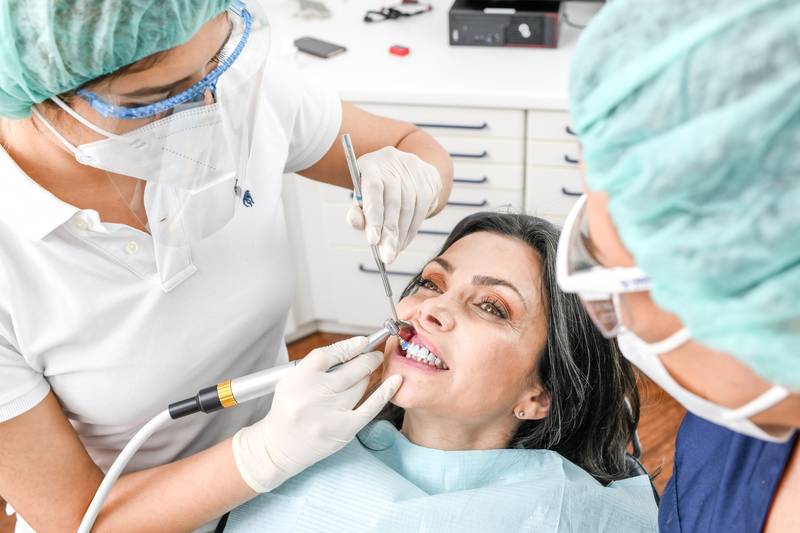As long ago as during classical antiquity, people began to make dental prosthetics from metallic materials. Today, modern dentistry can resort to an enormously diverse range of well over 1,000 industrially produced alloys. Depending on their specialized properties, they meet virtually any prosthetic requirements. “In dental prosthetics it is important to extend the range of possible applications of clinically proven alloys. And there is a constant demand for new developments to suit further indications and to provide technical alternatives in making dentures,” explains Dr. Martin Rickert, Chairman of the Association of German Dental Manufacturers (VDDI).
Despite the increase in all-ceramic dental prosthetics, metal-ceramic treatments still account for the largest share of dental prosthetics today. Conventional precious metal alloys with a high gold content continue to play an important part in casting and lately also in CAD/CAM-based milling techniques for making substructures for individual crowns and bridges. High-quality metal-ceramic restorations in particular are usually made using special, exceptionally biocompatible precious metal alloys. These are particularly advantageous in treating allergic patients as well as those with especially critical requirements for biocompatibility. These biocompatible alloys typically contain no palladium or copper but a high proportion of gold and platinum, which provides excellent functionality in compounds with other chemical elements.
This approach is complemented by gold reduced alloys, which are experiencing increasing international demand since they help reduce the financial burden of prosthetic therapy. As an alternative to the traditional casting technique, the dental industry offers the choice of getting precious metal alloys fabricated in its specialized milling centres — in addition to the base-metal approach. Another new alternative for making high-strength alloys is Selective Laser Melting (SLM). Dental technologists and dentists can look forward to the International Dental Show (IDS) from March 22 to 26 in Cologne as the best opportunity to learn about these and other current developments in dental alloys and to consult experienced manufacturers about these specialties.
Currently dominant in base-metal applications are cobalt-chromium and titanium alloys as well as commercially pure titanium. In this context especially, state-of-the-art milling technology offers a real advantage because it precludes casting-related problems such as expansion-related distortions or crack formation. The harder alloys containing no precious metals, especially cobalt-chromium alloy materials, require higher-performance and preferably stationary milling and polishing equipment. These requirements are met by equipment capable of convenient and economical processing, which has been developed by the dental industry specifically for this application. However, SLM technology also offers specific advantages in the processing of high-strength base-metal alloys: The special cobalt-chromium alloys usually employed in this technique can be used for making very large components, up to and including full arch 16-unit bridge structures.
Base-metal alloys, especially titanium alloys and commercially pure titanium, are now also the preferred approach for implant prosthetics. For some time now, most bone implants have been made from titanium materials, and base metals and titanium are now also becoming more important in the CAD/CAM-supported fabrication of implant superstructures. “Implant prosthetics opens up another large area of applications for special alloys,” says Dr. Markus Heibach, Executive Director of the VDDI. “The entire range of alloys and their diverse processing alternatives will be on show for trade fair visitors in Cologne to provide them with a comprehensive overview for their laboratory or practice.”
Tooth-coloured restorations with metal foundations meet high esthetic standards. For all of the alloys suitable for ceramic firing — now much more widely used than conventional casting alloys — ceramic or plastic-based veneering materials are available with compatible coefficients of thermal expansion. In particular the characteristics of ceramic veneers, which are available in high and low melting-temperature versions, are perfect for high-quality aesthetics. A wide variety of state-of-the-art veneer ceramics is available both for layering and for press-over techniques, providing an ideal alternative to metal alloys for high-quality substructures.
Professionals from dental laboratories and practices will find the International Dental Show an excellent opportunity for obtaining the latest information on the entire range of currently available dental alloys in direct converation with specialists from the exhibiting companies and experienced users. IDS, the world’s largest trade fair for dental medicine and dental technology, will take place from March 22 to 26, 2011 in Cologne.
IDS takes place in Cologne every two years and is organized by the GFDI Gesellschaft zur Förderung der Dental-Industrie mbH, the commercial enterprise of the Association of German Dental Manufacturers (VDDI) and staged by Koelnmesse GmbH, Cologne.
Note for editorial offices:
Photos from the last IDS Cologne are available in our image database on the Internet (www.ids-cologne.de), “For the Press”. If you reprint this document, please send a voucher copy.
- Alter:
4836 Tage



